#ancient egyptian textiles
Text
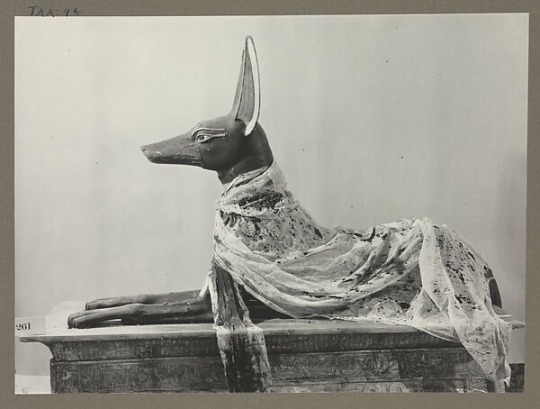

Harry Burton, Photo, 1926
Textile Draped over Anubis Figure, ca. 1300s BCE
Egyptian, New Kingdom
#ancient egypt#egyptian art#egyptian history#egyptian culture#ancient art#antiquities#ancient artifacts#artifacts#Egyptian artifacts#Anubis#god anubis#textile history#textiles#aesthetic#beauty#harry burton#ancient culture#ancient people#ancient history#art history#aesthetictumblr#tumblraesthetic#tumblrpic#tumblrpictures#tumblr art#tumblrstyle#artists on tumblr
296 notes
·
View notes
Text

#tarot cloths#sacred space cloths#alter cloths#textiles#bespoke#hand embroidery#goldwork#hand crafted#witchy crafts#crafts#tarot#ankh#kemetian#egyptian#kemet#ancient egypt#hieroglyphs#wadjet
1 note
·
View note
Text
fiber art adventures in egypt
I recently got back from a trip to Egypt & finally got around to organizing some pictures to share. One of the things I was most excited about was seeing what I could find on fiber arts and textiles.
Dropping everything under a read more, 'cause this will be a long post haha
first visit: the National Museum of Egyptian Civilization (NMEC)
At the time of visiting, they had a special textiles exhibit. It covered Pharonic Egypt all the way up to modern times, although I only had time to check out the dynastic & a bit of the Coptic portion of the exhibit (which was what I was really hoping to see anyways)
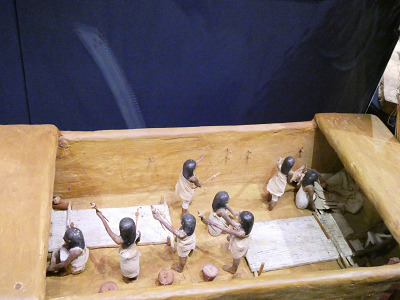

Was super excited to see this diorama in person. I knew about it but had never seen good pictures of it. From the little I've seen of ancient Egyptian spinning, spinning with two spindles seems to be the norm rather than a master technique? It also shows up in tomb art, which the exhibit also shared:

They also used a different fiber preparation (splicing to create a rove of fiber, no traditional drafting to my understanding) so that probably made a difference? Regardless I really want to see if I can replicate the technique, especially because their spindles look so similar to modern spindles??

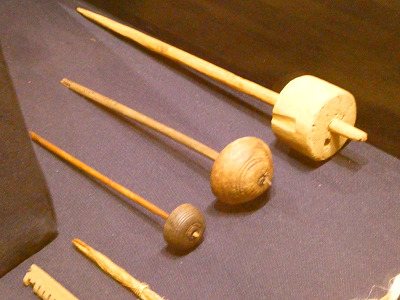
I took so many pictures of spindles, guys, and I fully intend to either have a few replicas made or to learn to make some myself. Also, although they were unlabeled... I'm pretty sure those are beaters for weaving? That was a bit of a trend with this trip, so much stuff was unlabeled :( I would've killed to at least get some date estimates for some of the stuff they had on display. I was nerding out in here though, and my family took a few pictures of how excited I was getting. A bit embarrassing, but eh haha
The exhibit also had a section on natural dyes used with a fun visual;
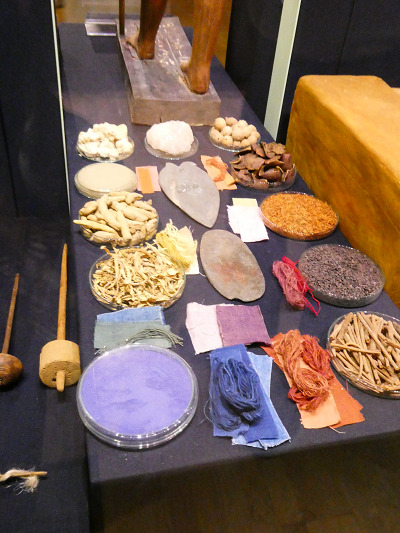
There was several diagrams specifically describing each dye source, but in the interest of not overloading on pictures I'll just list them out. For blues; woad, Yellows; turmeric, safflower, saffron, or yellow ochre; reds; madder, henna, pomegranate, and kermes. I originally thought kermes was another way to say cochineal, but it only seems to be distantly related.
next visit: Ramses Wissa Wassef Art Center
A small art center dedicated to hand-weaving wool and cotton tapestries. All of their work was museum quality & awe inspiring!!
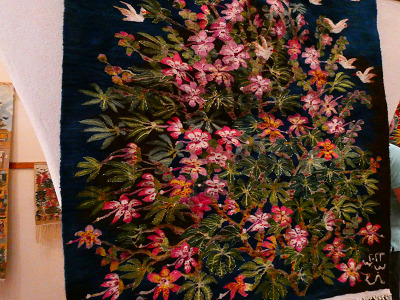


Was even invited to their back rooms to watch a few of their weavers working; no I don't have room to put a room-sized loom anywhere but heck do I want one now

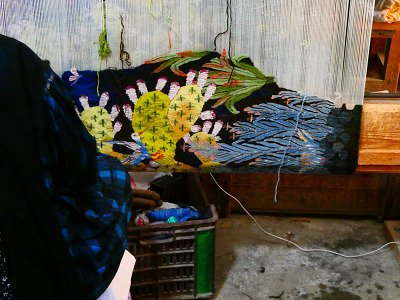
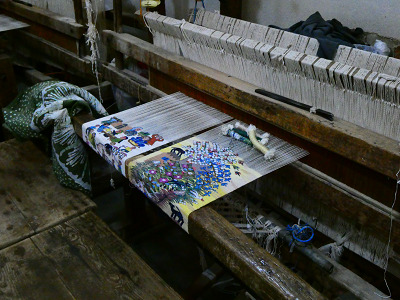
Our guide that took us through talked a bit about the natural dyes they use (all of their dyes are dyed in house with what they grow in their dye garden!!!) and got excited to hear I was also interested in natural dyes! He seemed a bit disappointed I'd never worked with indigo and. while indigo scares me, I'll take it as a sign that maybe I should try some time this year haha.
final visit; the Egyptian Museum
we really had to rush through this one which was a huge shame because it's packed full of artifacts. Also, the lighting in there is atrocious, so apologies for the not great pictures ahead.
They had a fascinating display of textile tools, more than what the NMEC had;



(Hand for size reference) I want all of these spindles! So badly! But a few of them look so much like a few of the spindles I own already?? A few of them had a spiraling notch, that's so cool? But also, what's going on with the one with two whorls? I have no idea. I'm fascinated.
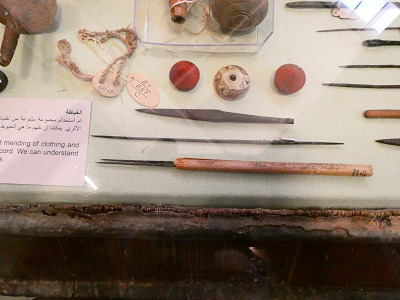

Look at these whorls!! Although again, I'm a bit confused; the lack of labeling strikes again. Unsure why some of these "whorls" have two holes, or what the metal object with the wooden handle is. The display implies sewing needles, and some of them do look like it, but others.... really don't look like sewing needles. I'm absolutely enchanted by this little whorl though. I think it has birds on it?
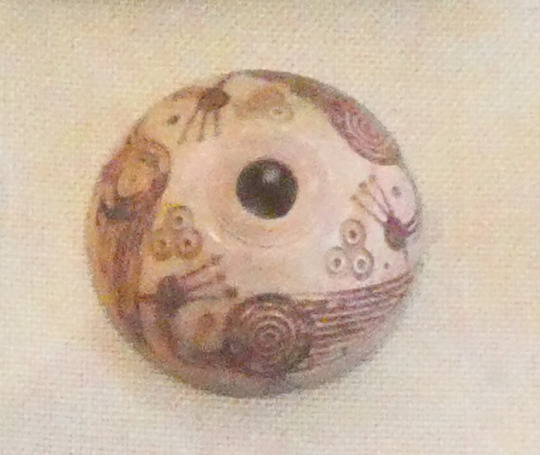

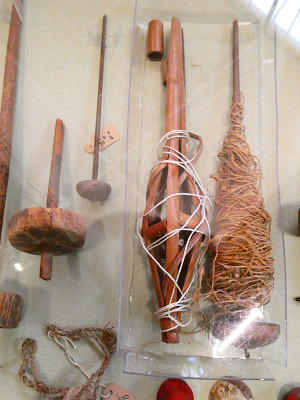
More objects that I'm baffled by- the signage doesn't really indicate what some of this stuff is, if it's even known. Also confused by the object wrapped in white string in the right pic; it looks like a distaff but to the best of my knowledge the (ancient at least) Egyptians didn't use distaffs. It probably popped up in later times and was put in this display since it was still relevant, but I'm still not sure.
I have so many more pictures & thoughts but I'll save those for more specific future projects. I've been doing research outside this trip on ancient Egyptian spinning techniques and desperately want to go deeper into that, this trip just solidified how excited it makes me. If you made it all the way through this, many thanks for reading!
Bonus; look at this ancient linen 🥺

#hand spinning#archaeology#extant artifact#weaving#fiber arts#long post#letters from skylark#sorry for the overall low quality images in this post. Got a new camera and wasn't the best at using it this trip#also the raw image files were huge so I heavily downsized them to make sure this post wasn't a beast to load#would be happy to share the raw images if desired though
248 notes
·
View notes
Text
Bharani : the birth of Venus.
Part 1

Let's talk about ancient godesses of love and Bharani nakshatra.
I will base my research on the legend of the dead and resurrected god present in many religious myths coming from the middle east (ps : i'm sorry in advance for the grammar, syntax or spelling mistakes that you may find in this post, english is not my first language)
Bharani, situated in the heart of the rashi of aries is governed by Shukr: Venus but also by Yami and Yama in vedic mythology who are twins and gods respectfully of life and death.

Yama, the main deity of Bharani is said to be one of "8 celestial gatekeepers, who guards eight directional doorways or exits through which souls travel from an earthly plane to other planes of existence" making him the lord of Dharma since at one's death, he decides basing on his karma in what plane should one reincarnate.

Since Yama is responsible for directing the flow of life on Earth the association between bharani and the yoni becomes evident: the female reproducting system serves as a portal for souls to take on a physical form. So bharani as Claire Nakti perfectly described it relates to the feminine ability to receive, hold, nurture and ultimately transform through the womb.
Because Bharani aligns itself with all the feminine qualities by excellence it makes sense as to why Venus is it's ruler.
Venus is the roman name for the goddess Aphrodite: in greek mythology. She is said to be the goddess of love and beauty at large but also the goddess of war and sexuality. First because the ancient greeks saw the duality that links love to war and how they seem to come together through sex.
Also, Aphrodite is said to be born from the sperm of Ouranos when his testicules got cut by his son Saturn as he was always feconding Gaia, the Earth and causing her distress: he was acting cruel regarding their children. The sperm of Ouranus got mixed up with the foam of the Ocean creating Aphrodite which means "risen from the foam". So it was interesting to see that as Shukr also means sperm in sanskrit and it shows the origin of Venus as a fertility goddess too.

This conception of Aphrodite directly links her to ancient goddesses of love such as Ishtar or Inana in Mesopotamian/summerian mythology or Isis in egyptian mythology. Most of the time, these goddesses are the female counterpart of a god that was once mortal, got cursed, died and then came back to life for them to form an immortal couple.
In the case of Ishtar, her consort is Dumuzi or Tammuz and Osiris is the consort of Isis.
In Mesopotamian mythology :
Ishtar or Inana in sumerian is the goddess of love and sexuality, beauty, fertility as well as war because of her status as a " bloody goddess" mostly refering to her character in plenty of myths.
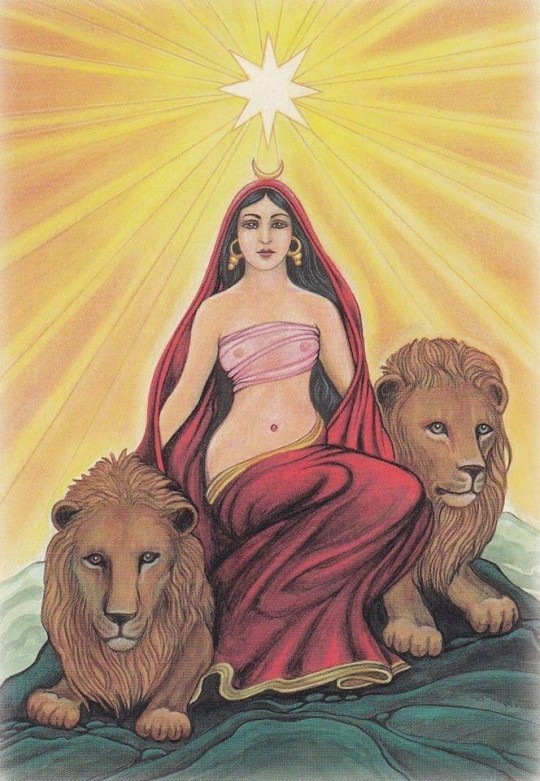
For example: in one story, she became infatuated with the king Gilgamesh, but the latter knowing her fierce reputation, refused her advances. As a result she got furious and unleashed the celestial Bull on Earth which resulted in 7 years of plagues. This celestial bull was later defeated by Gilgamesh and Endiku, and its corpse was throwed in front of Inana. Blinded by rage, she decided that as a punition Enkidu must die and sad at the death of his bestfriend Gilgamesh began his journey to find a cure to Death.
Bharani is a fierce or Ugra nakshatra meaning that its nature is agressive, bold and assertive in pursuing their goals. They are ruthless in the process of accompling what they desire the most and are inclined to extreme mood swings that can result in them to be "blinded" by their extreme emotions perfectly expressing the passionate character of Venus and her other equivalents in differents pantheons of antiquity.
Inana/ Ishtar's story with Dumuzi/Tammur begins as she was convinced to chose him by her brother Utu. Then she got married with the shepphard Dumuzi instead of whom she prefered in first the farmer: Enkinmdou. During the courtship, Inana prefered the fine textile of the farmer and his beer rather than the thick wool and milk of Dumuzi. The preference for the shepphard illustrates that at the time the Mesopotamian civilisation was known for their proliferent agriculture with the egyptians in the region, so this myth encapsulate the opposition between nomads and sendatary people at this specifific time period.

By the way, another symbol of Bharani is the cave and traditionnaly, the cave was used as a storage room for food. Also Bharani's purpose is Artha so these individuals are motivated to accumalate resources and provide safety and security, so Bharani can be linked to the exploitation of natural ressources like the soil illustrating the preference of Ishtar for the farmer. This is reinforced also by its Earth element.
So coming back to the myth, in a mesopotamian text called Inana's Descent to the Underworld, the goddess goes to Kur (hell) with the intent of conquering it, and her sister Ereshkigal who rules the Underworld, kills her. She learns that she can escape if she finds a sacrifice to replace her, in her search, she encounters servants who were mourning her death however she finds Dumuzi relaxing on a throne being entertained by enslaved girls. Enraged by his disloyalty she selects him as a sacrifice and he is dragged to the Underworld by demons.
He is eventually resurrected by Inana and they become an "immortal couple" as he may only come back to life for half of the year, being replaced by his son (?) who is also his reincarnation for the other half of the same years, so describing the cycle of regeneration of life.
Other mythologycal stories of goddesses in the near east describe a similar patterns:
The goddess Asherah is described as being the mother and the lover of her son Adonis.
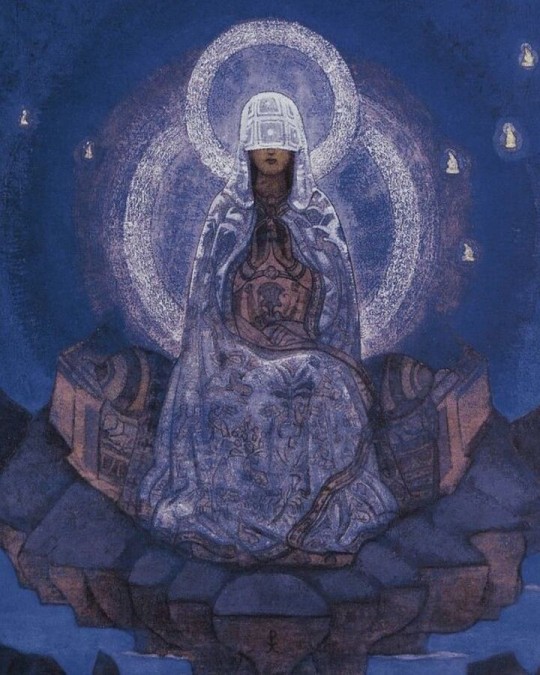
The goddess Cybele in the phrygian pantheon takes the form of an old woman as she described as the mother of everything and of all. And at the same time she is the consort of Attis who his her own son (wtf ?)
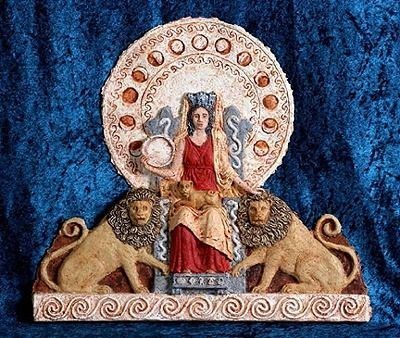
Also, Yama and Yami are implicated in a incestuous entanglement where his sister Yama wanted to lay with him however he refused establishing himself as a god with an infaillible moral campus.
All of these representations illustrate the relation between the masculine and the feminine, life and regenration which are all topics related to Bharani nakshatra. Women by their capacity to give life are seen as the source of life and therefore are eternal as they are able to regenarate themselves through daughters which are identical to them whereas man who is unable to reproduce by himself, is therefore mortal feels the need to associate with her to resurrect through a son who is identical to him. Bharani exiting as the embodiment of the link between "the father and the offspring" which is the feminine vessel.
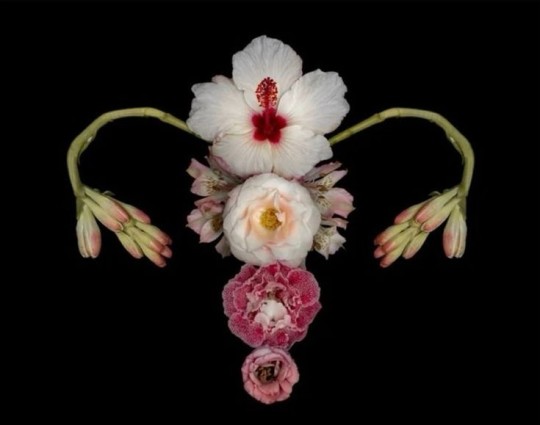

So this is certainly part 1, I think that these ancient myths are where Claire Nakti found her inspiration for her series on Bharani.
#vedic astrology#cinema#coquette#astrology#vintage movies#aesthetic#coquette dollete#fashion#vintage#movies#greek mythology#roman mythology#ancient egypt#bharani#chitra nakshatra#purva bhadrapada#purva phalguni#cowboy carter#venus#adonis
102 notes
·
View notes
Text
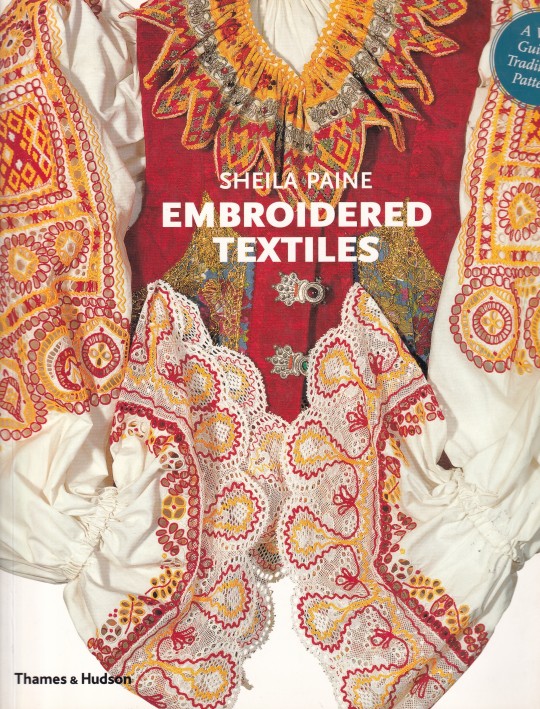



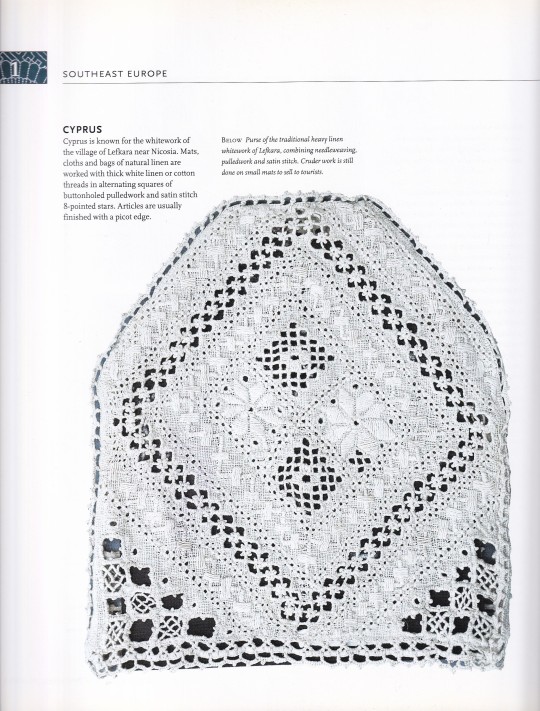
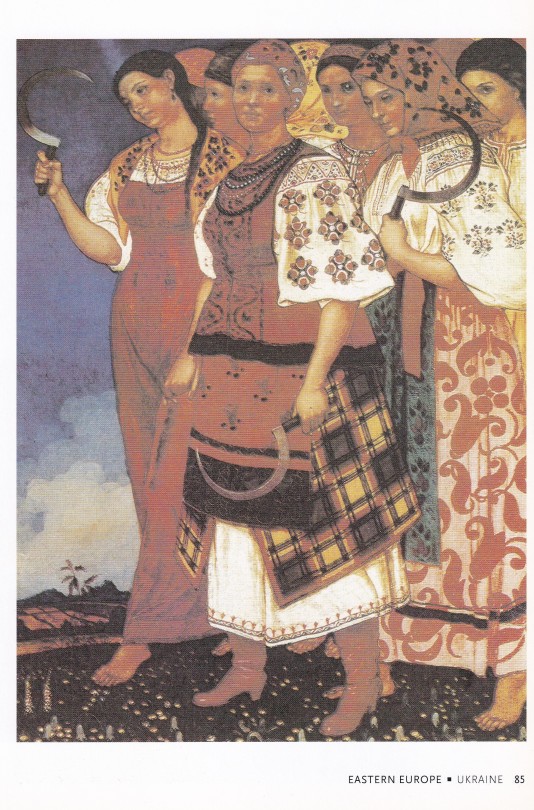


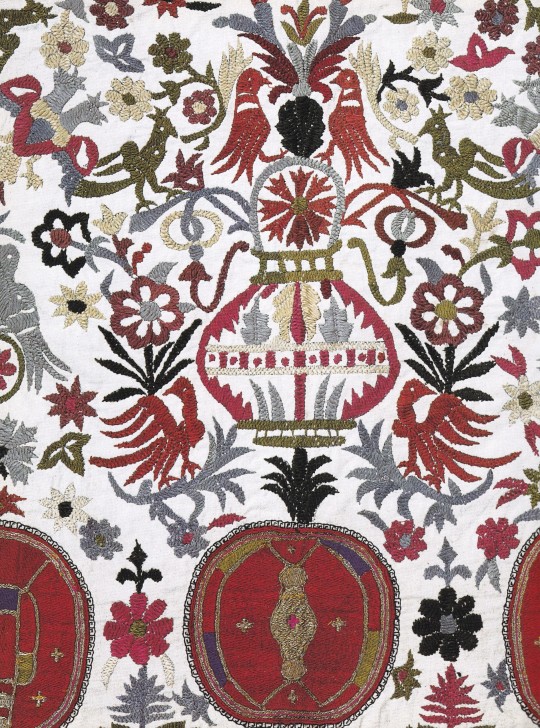


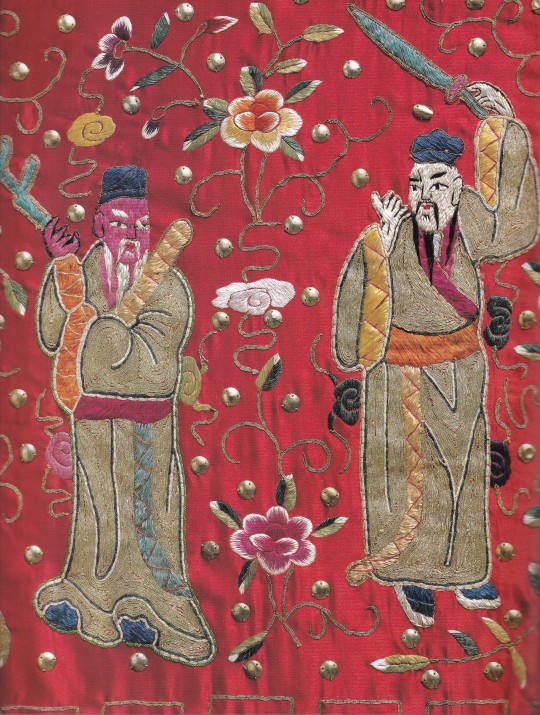

Embroidered Textiles
Sheila Paine
Thames & Hudson, London 2010, 240 pages, 24x28cm, First paperback edition, ISBN978-0-500-28858-0
euro 40,00
email if you want to buy [email protected]
Traditional patterns from five continents with a worldwide guide to identification
The art of embroidery has been practised for thousands of years. In the West, traditions have been at the mercy of trade and fashion, but in much of the rest of the world, embroidery continues to be rooted in ancient beliefs and superstitions. This beautifully illustrated book examines in detail the fascinating symbolism of the motifs and patterns that give life to these spectacular textiles, from Ghanaian patchwork banners to Egyptian headshawls. Complete with a glossary, dictionary of stitches, further reading and information on where to access public collections as well as how to collect textiles of one's own, this is an unrivalled guide for anyone interested in textiles, costume or craft.
28/01/24
#embroidered textiles#motifs and patterns#Cyprus#Ukraine#Panama#Portugal#Ghana#Egypt#five continents#textiles books#fashion books#fashionbooksmilano
36 notes
·
View notes
Note
Is there a resource you can recommend that lists off the types of clothing women wore throughout Egypt's history? We seem to only find rudimentary lists when scouring online
Yes; Dr. Vogelsang-Eastwood's Pharaonic Egyptian Clothing. It's out of print, but there should be a downloadable PDF accessible through this post by @shoomlah.
The original post says some of the knowledge may be considered out of date by now, but I can tell you it's not considered as such. Gillian still uses this knowledge to organise ancient Egyptian clothing workshops for the Textile Research Centre in Leiden, and the National Antiquities Museum used her reconstructions as recently as 2018.
177 notes
·
View notes
Note
You know how in lots of modern art Egyptian men are portrayed shirtless a lot? I know it’s in some pictures on carved reliefs and stuff, but was it common for men to not wear a shirt or cover their torso, or was it a certain occasion sort of thing? Also do you know what sorts of looms were used in the Middle Kingdom, and what the most common fiber types were for everyday clothes? I assume linen was a big one but what about outer layers?
Yes, it was fairly common. It's a hot country and linen (depending on quality) is expensive and takes time to make. A loincloth or kilt is pretty typical male dress in Ancient Egypt, but a bag dress with a sash at the waist is also an option. The bag dress seems to have come more into fashion during the middle to late New Kingdom, but the Deir el Medina tombs (part of the Theban Tombs set or TT) of Amenemhat (TT340) and Inerkhau (TT359 & 299) both have depictions of this sort of dress.
The type of loom the Egyptians used didn't really change much throughout Pharaonic history. They use a horizontal ground loom that creates a tubular warp. Only in the New Kingdom did they get a vertical loom.
I'll link UCL's page on textiles here as it as a section on looms:
I'll also link Swansea Egypt Centre's blog post on them:
The most common fibre for clothes was linen. They could also use things like hemp, palm, and in the Pre Dynastic period analysis of the fabrics show they were also making them from grass and reeds. Woolen items have also been found, and these tend to mainly be shawls or cloaks for when it was cooler. The only thing they don't make clothes from is cotton. No cotton in Ancient Egypt.
If you want to know more about Egyptian clothing then I suggest reading this book by Gillian Vogelsang Eastwood (courtesy of @rudjedet):
121 notes
·
View notes
Photo



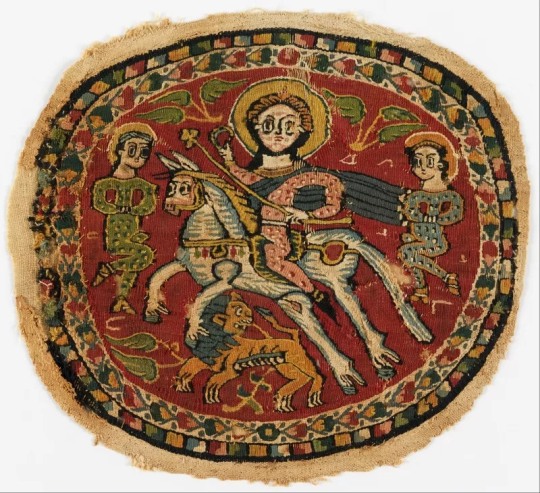
Coptic textile, 6th - 10th century.“It was the Arabs who gave the name Copts (Qibt or Qoubt in Arabic) to the inhabitants of Egypt at the time when Islam arrived” says Marie-Cécile Bruwier, Egyptologist and Scientific Director of the Royal Museum of Mariemont.
“At that time, the population comprised indigenous Egyptians and descendants of metropolitan Greeks and Romans.
” Most of the autochthons were Christians, but infused by other religions and even paganism.Over time, many Copts became Muslims. Copts hence designates those who remained Christians, their religious rites and their idioms coming down from ancient Egypt. Today, it is estimated that the Coptic community comprises some 7.5 million people, accounting for almost 10% of the Egyptian population.
https://coptictextilesft.collectionkbf.be/coptic-textiles
118 notes
·
View notes
Photo

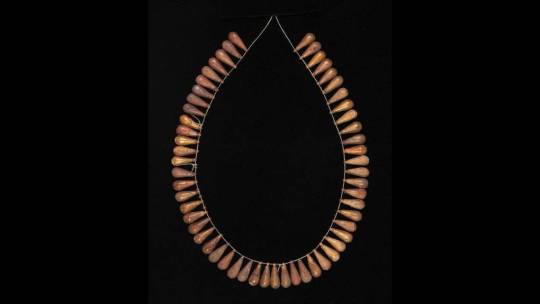





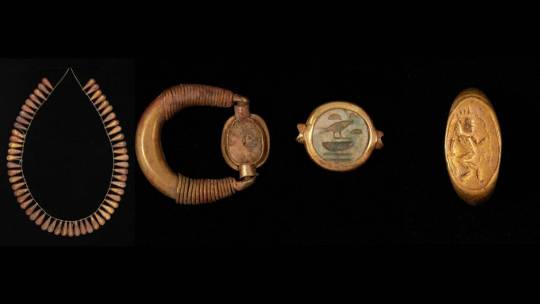

3,500-Year-Old Gold Jewelry Found in Egyptian 18th Dynasty Tomb
The jewelry collection was discovered by a team of Egyptian and English archaeologists.
A collection of ornate gold jewelry dating back to 3,500 years ago was recently discovered at the Tell El-Amarna necropolis, along the eastern bank of the Nile River in Egypt.
The necropolis, located in modern-day Minya, was a burial ground for the city of Amarna, or Akhetaten, and was constructed in 1346 BCE to serve as the capital city of the Pharaoh Akhenaten, the 10th ruler of the late Eighteenth Dynasty.
The jewelry collection was discovered by a team of Egyptian and English archaeologists who were working on excavations at the Amarna North Desert Cemetery when they unearthed the burial site of a young adult female.
The woman had been wrapped in textile and plant-fiber matting and buried wearing a necklace with petal-shaped pendants as well as three rings made from gold and soapstone.
The image of the ancient Egyptian deity Bes, who was worshipped as a protector of mothers, children and childbirth, is engraved on one of the three rings.
The other two rings are inscribed with a phrase in hieroglyphics that translates into “lady of the two lands,” presumably referring to Egypt’s lower and upper kingdoms.
The young woman was buried among a small number of other burial shafts, pit graves and tombs, all of which date back to 1550-1292 BCE, during the Eighteenth Dynasty.
Although the Akhenaten initially followed traditional Ancient Egyptian polytheistic religion, he later created his own religion, called Atenism, which centered around the worship of the sun god Aten.
Construction on the city was started around the fifth year of his reign (1346 BCE) and is thought to have been completed by the ninth (1341 BCE), although it only became the capital city two years after completion.
The city was abandoned soon after the pharoah's death when his son, King Tutankhamun decided to leave it behind in favor of his birthplace in Thebes.
As a result, the city and its internal plans were largely preserved, as once it had been abandoned it remained uninhabited until Roman settlement in the area. Today, the ruins of the city include grand temples, palaces and tombs.
According to Ahram Online, the ancient city continues to transform our understanding of how human society has developed, due to its status as one of the world's preeminent archaeological sites for understanding how people lived in the pre-Classical world.
#3500 year-old gold jewelry Found in Egyptian 18th Dynasty Tomb#Tell El-Amarna necropolis#ancient tomb#ancient grave#ancient necropolis#ancient artifacts#archeology#archeolgst#jewelry#gold jewelry#ancient jewelry#treasure#history#history news#ancient history#ancient culture#ancient civilizations#ancient egypt#egyptian history#egyptian art
141 notes
·
View notes
Text
New Exhibition at the Metropolitan Museum of Art Showcases Rare Artifacts
by Samantha Patel, reporter

Submitted photo
NEW YORK CITY - The Metropolitan Museum of Art is set to unveil its latest exhibition, "Echoes of History: Treasures from the Ancient World," offering visitors a glimpse into the rich tapestry of human civilization through a collection of rare artifacts and antiquities.
Curated by renowned archaeologist Dr. Eliza Medina, the exhibition features a diverse array of objects spanning millennia and continents, from ancient Egyptian mummies to Greek pottery to Mayan sculptures. Each artifact tells a unique story, offering insight into the beliefs, customs and achievements of the civilizations that created them.
Highlights of the exhibition include a set of intricately carved jade artifacts from the Shang dynasty, a stunning mosaic depicting the legendary hero Hercules, and a remarkably preserved Roman gladiator helmet. Visitors will also have the opportunity to view rare manuscripts, textiles and jewelry, providing a comprehensive overview of the cultural heritage of the ancient world.
"We are thrilled to present this extraordinary collection of artifacts to the public," said Medina. "These objects offer a window into the past, allowing us to connect with the experiences and aspirations of people who lived thousands of years ago."
The exhibition aims to foster a deeper understanding and appreciation of the cultural diversity and historical significance of the ancient world. Through interactive displays, multimedia presentations and educational programming, visitors of all ages will have the opportunity to engage with the artifacts and explore their significance in context.
"We hope that 'Echoes of History' will inspire curiosity and dialogue about the enduring legacy of ancient civilizations," said Emilia Peter, Director of Education at the Metropolitan Museum of Art. "By learning from the past, we can better understand our own place in the world and the challenges we face as a global society."
"Echoes of History: Treasures from the Ancient World" opens to the public on April 16 and will run through May 2. For more information and ticket reservations, please visit our website."
#the daily bugle#daily bugle#jjj#jj jameson#j jonah jameson#marvel#mcu#marvel mcu#marvel spider man#marvel comics#marvel spiderman#spider man#spiderman#peter parker
7 notes
·
View notes
Text
On wishful thinking and the absence of megafauna beasts:
"We know that ancient Sumerians, Assyrians, Egyptians, Greeks, etc. were familiar with large charismatic megafauna that are now extinct in the region, because Asian elephants, Caspian tigers, Asiatic lions, Persian cheetahs, Syrian ostriches, and more creatures used to naturally live in Mesopotamia and Anatolia and the Fertile Crescent until historic times. But were rhinos and giraffes also living in Southwest Asia during the past 10,000 years?"
No. But, within the Holocene, the Sahara desert region used to be much wetter. The "Green Sahara" period allowed white rhinoceros and African elephants and giraffes to lives across North Africa within the past 8,000-ish years. Petroglyphs across the Sahara attest to the presence of rhinos and giraffes in modern-day Morocco, Algeria, Libya, and Egypt.
But this doesn't mean giraffes persisted in some hidden enclave in the Levant, unnoticed and unrecorded by Assyrians or Babylonians or something.
The record-keeping of states, even in the Bronze Age and Old Kingdom, were detailed and meticulous enough to account for landscape, environmental anomalies, large animals, etc.
When there is wishful thinking for the survival of extinct species, I think that people can struggle to understand the scale of ecological degradation, or people can struggle to comprehend the meticulous record-keeping of states. Today, with panoptic satellite technology and aerial imagery of remote corners of the planet, states and corporations poke and prod every physical space, searching for resources to capture, manipulate, sell, employ, etc. Big creatures do not go unnoticed. Even when unseen, they leave detectable ecological signs, hints, traces. This is, for example, how we’re sure Megalodon is extinct. We can hardly see or detect the vast majority of the undersea world(s), but we can still perceive these megafaunal absences.
Even in the ancient world(s) of the Fertile Crescent, states kept good records. In fact, the ancient Fertile Crescent is partially famous to us specifically because of their good record-keeping and story-telling regarding deforestation, agriculture, plants, rivers, floods, etc. Think Gilgamesh, the felling of the Lebanese cedars, the sea-derived purple dyes of the Phoenician textiles, Noah's Ark, the flooding of the Nile riverbanks, Assyrian kings hunting elephants, the display of tigers and lions for sport and pleasure, the elephant ivory paid in tribute to Memphis and Thebes, etc.
Ancient people of the region were so good at keeping records about landscape that it may surprise modern observers.
We (modern observers) have a pretty good idea of the landscape of the so-called Fertile Crescent from the time of Ur, Eridu, Lagash, and the Egyptian Old Kingdom onward. For example, we know which tropical animals, in certain quantities, were shipped by Punt northward through the Red Sea as tribute to Egypt. We know how many gazelles were hunted, elephants captured in pit-fall traps, and big cats ensnared by Assyrian royal hunting parties. And a creature as conspicuous as the giraffe would not go unnoticed in Egypt, Akkad, the Phoenician realm, Babylon, etc.
The giraffe is absent from all of these accounts of ancient Southwest Asia. Sad.
However, as a consolation, to provoke wonder, consider that, even in the Mediterranean, the sea so thoroughly manipulated by agriculturalists and seafaring traders and state-building empires over thousands of years, a few animal surprises could stay hidden, like treasure. There may have been a unique lineage of North African elephants, known to Carthage, in the Atlas mountains or interior Algeria, as late as 200 AD. And yet biologists, taxonomists, and historians argue to this day as to whether or not there was a unique subspecies of African elephant living on the Mediterranean coast when Rome destroyed Carthage, with convincing arguments for and against. How could an elephant of all creatures elude description by the record-keepers of such an empire? And yet, these creatures existed.
Lions prowled mainland Greece until at least 400 BC. Today, perhaps 400 endemic monk seals continue to swim in the Aegean Sea. Jackals continue to wander the Balkans. We may no longer live alongside woolly mammoths. But underground, in Croatian caves, the olm still survives swimming silently.
100 notes
·
View notes
Text
Archaeologists excavating at Amarna have discovered more evidence of the opulence of this ancient city, built by Akhenaten as the capital of his new Egyptian world.
40 notes
·
View notes
Text
my very specific way of doing things is going to be the end of me
i dont understand why i am the way i am
whenever i want to do somthing i break it down into steps right? thats normal everyone does that
except for the fact that im shit at making reasonable steps and end up with a wild step 1 that has nothing to do with anything that just kills my enthusiasm
for example a few days ago i wanted to try a specific mixed media art
embroidery and painting together
easy simple right? i know these two things very well so it shouldn't be hard to combine them i chose a familiar theme to make the art about - ancient Egyptian jewelry - just that
so tell me why my step one was
1- research ancient Egypt
2- also ancient Sumeria for the added information
3- understand everything to know about their art carving jewelry making etc
4- visit online museums and look at everything in their collection understand the patterns they used and their textiles
5- now that i've gathered enough information that would allow me to write a masters thesis i should pick a jewelry piece to embroider oh wait i lost the momentum doing all the research cause it took alot of time so
actual step 5 : abandon ship
AM I INSANE WHATS WRONG WITH ME WHO DOES THIS TO THEMSELVES
#especially since i have ADHD i knowwwww taking too much time will make me lose interest instantly#somthing is deeply wrong with me
4 notes
·
View notes
Text
Hello I have some things to give you the feels about the boy King Tutankhamun.
The Golden Thread, by Kassia St Clair



The boy king was treasured... he was turned into a holy thing... sent away with blessings and love... and now he is not even a shadow of it, there is nothing he or his people would know as holy about his rest now. The things he treasured were with him but what made him sacred was the linen, and the linen was destroyed. Transcript under the cut.
::readmore::
[The linen] over the guardian statues was a rich cream and had a texture that Carter described as filmy. Although this was the first time this practice had been observed, as it were, in the flesh, it was already known from surviving rites and paintings. These indicate that the wrapping of cult statues was an important part of worship. They were kept in special shrines deep within temples and were dressed, in private, with fresh linen at least once daily by priests. Linen was closely bound to the secrecy, seclusion and ritualised concealment that was key to ancient Egyptian religiosity. In Unwrapping Ancient Egypt, Christina Riggs argues not only that the textiles used to cover sacred images and objects were an intrinsic part of their sanctity and meaning, but that this was in turn renewed and strengthened during each ritualised wrapping ceremony. The linen, in other words, was part of the point, not just a protective layer. "The act of wrapping a body or a statue in linen had the power to transform mundane, or even impure, matter into something pure and godlike."
If breadth in vocabulary can be used as a rough stand-in for cultural significance, it is probably worth noting the wealth of words used for and about textiles and mummification. The Apis Embalming Ritual, for example, used three different verbs for applying textiles to a body: wety meant to wrap, djem or tjam indicated covering, while tjestjes was fastening with a knot. Hebes were large, rectangular textiles used in mummification; narrow bandages were pir, long, torn bandages were nebty. Priests could also make use of seben, geba and seher bandages and sewah, benet and kheret cloths. From around 1500 BC a body was referred to as a khat, an embalmed body was a djet, a homonym for 'eternity'; and a wrapped figure wearing a divine head covering got another word: sah.
After [Carter's] work was done, he assured readers, 'the King's remains ... will be reverently re-wrapped and returned to the sarcophagus.' That may have been the intention, but if it was then something - perhaps the rumours of the curse or, more likely, all the treasures Tutankhamun's mummy had secreted about its person - got in the way of Carter's intended care. When the sarcophagus was re-opened in 1968, the body of the Egyptian ruler was found to be in a parlous state. "The mummy was not in one piece,' the researchers later wrote. "The head and neck were separated from the remainder of the body, and the limbs had been detached from the torso... Further investigation showed that the limbs were broken in many places." These breaks had been the work of Carter and his team, who had employed ever more violent methods to get at the body, amulets and jewellery among the bandages; heated knives were slid inside the golden mask to prise it from the decapitated skull. The boy king has been laid to rest again inside his tomb, but in a base, broken khat incarnation, rather than the linen-sculpted and sacred sah image that the masters of secrets created around 3,360 years ago. Tutankhamun has since been re-buried unwrapped.
#tutankhamun#kassia st. clair#the golden thread: how fabric changed history#linen#history#i was in tears about this
39 notes
·
View notes
Text
Caral-Supe (also known as Caral and Norte Chico) was a complex pre-Columbian-era society that included as many as thirty major population centers in what is now the Caral region of north-central coastal Peru. The civilization flourished between the fourth and second millennia BC, with the formation of the first city generally dated to around 3500 BC, at Huaricanga, in the Fortaleza area.[1] It is from 3100 BC onward that large-scale human settlement and communal construction become clearly apparent,[2] which lasted until a period of decline around 1800 BC.[3] Since the early twenty-first century, it has been established as the oldest-known civilization in the Americas, and as one of the six sites where civilisation separately originated in the ancient world.[4]
Complex society in Caral-Supe arose a millennium after Sumer in Mesopotamia, was contemporaneous with the Egyptian pyramids, and predated the Mesoamerican Olmec by nearly two millennia.
In archaeological nomenclature, Caral-Supe is a pre-ceramic culture of the pre-Columbian Late Archaic; it completely lacked ceramics and no evidence of visual art has survived. The most impressive achievement of the civilization was its monumental architecture, including large earthwork platform mounds and sunken circular plazas. Archaeological evidence suggests use of textile technology and, possibly, the worship of common deity symbols, both of which recur in pre-Columbian Andean cultures. Sophisticated government is presumed to have been required to manage the ancient Caral. Questions remain over its organization, particularly the influence of food resources on politics.
The use of cotton (of the species Gossypium barbadense) played an important economic role in the relationship between the inland and the coastal settlements in this area of Peru. Nevertheless, scholars are still divided over the exact chronology of these developments.[1][13]
Although not edible, cotton was the most important product of irrigation in the Caral-Supe culture, vital to the production of fishing nets (that in turn provided maritime resources) as well as to textiles and textile technology. Haas notes that "control over cotton allows a ruling elite to provide the benefit of cloth for clothing, bags, wraps, and adornment".[13] He is willing to admit to a mutual dependency dilemma: "The prehistoric residents of the Norte Chico needed the fish resources for their protein and the fishermen needed the cotton to make the nets to catch the fish."[13] Thus, identifying cotton as a vital resource produced in the inland does not by itself resolve the issue of whether the inland centers were a progenitor for those on the coast, or vice versa. Moseley argues that successful maritime centers would have moved inland to find cotton.[1]
the ancient civilization in the andes was really old and kinda strange. unclear relationship between inland and coastal. possibly dependent on fishing
12 notes
·
View notes
Note
do you know what ancient Egyptians would wear in the cold? Or any resources where I could fine information on this? I’ve tried looking it up but I can’t find anything, I would assume that this type of clothing did exist though because I know it gets super cold in the desert at night (although I don’t know how much the climate has changed since then or how cold areas closer to the Nile/Mediterranean are), I wouldn’t imagine textiles from that long ago would still exist and I’ve never seen any art with heavier clothing, although I have seen clothes from the Coptic era (if that’s the right thing to call it) that did seem heavier but were probably worn year round for protection from the sun potentially? Sorry I feel like I’m rambling all my thoughts loll
No worries, you're perfectly clear to me!
The short answer is that we have textual and pictographic evidence that the Egyptians had and wore cloaks, which by and large would have been rectangular sheets of fabric and which were either wrapped, draped, or tied.
The longer answer is that there's relatively little evidence, but the evidence we do have shows potential different cuts and different ways of wearing of cloaks as well as shorter shawls. It's assumed that the cloaks may have doubled as blankets, but since we don't have any unequivocal extant examples we're not sure of that, nor of what material these as a rule were made of - or even if people would have owned different cloaks of different materials. By and large, textiles were made of linen or other types of plant fibre. Linen doesn't, however, take dye well and we do have depictions of colourful cloaks. If the depictions of those cloaks are true to reality it's possible that we may be looking at wool, which does take dye.
As with most ancient Egyptian clothing items, the style of wear would be subject to change and fashions throughout time. In the Old Kingdom, cloaks would be wrapped around both shoulders. You can see this style in the statue of princess Nofret:
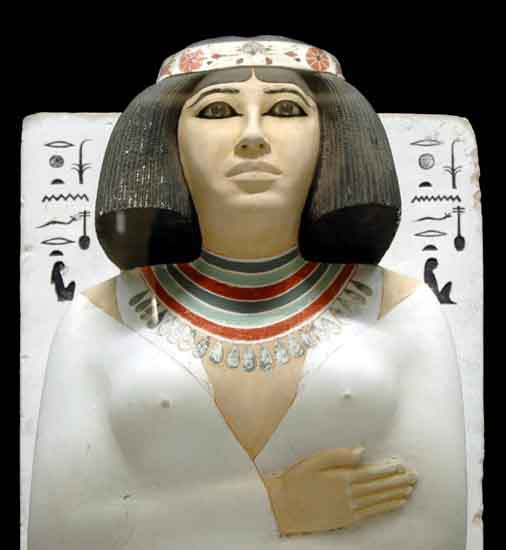
Her cloak is relatively simple and wrapped around her shoulders, pulled together at the front. The fabric, at least at is is portrayed here, looks plain and smoothed. Ancient Egyptians didn't use a lot of dyed fabrics: in general, items of clothing were kept either their natural colour, or bleached white. Decoration would come from jewellery, as we can see in the way Nofret's necklace is the focal point of her attire.
In the Middle and New Kingdoms you see styles that are slightly more elaborate in that they could be knotted or were worn under one arm with the excess thrown over the other shoulder, like this relief of Ukh-hotep from his Middle Kingdom tomb in Meir:
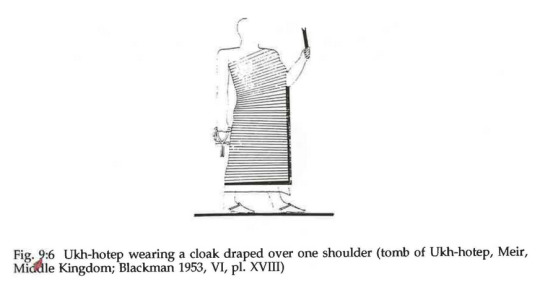
The cloak is either striped or pleated. After the Old Kingdom pleated fabrics came in fashion, a style that reached peak popularity in the New Kingdom.
We also have this interesting relief showing three types of cloaks held up by six people, from the mastaba of Kha'afkhufu:
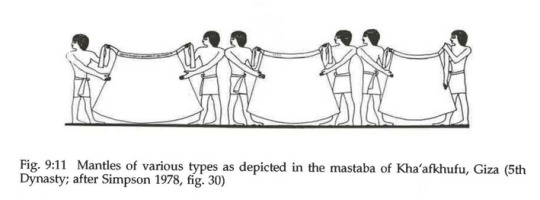
There's a similar relief in another tomb that shows the most-left cloak.
We have examples of other styles, such as (shorter) cloaks and shawls that didn't have the longer strip on the topside as we see in the relief above but which were tied on one shoulder, or cloaks that were extremely elaborately wrapped, which required a much larger length of fabric than would conceivably be useful for a blanket. So in a number of cases, cloaks seemed to have been separate fabrics items on their own. All of this is, however, information from the highest social strata of Egyptians and we should consider it as such. The working class had less access to linen and would by and large wear clothing made from reed and papyrus. It's conceivable that the double use of cloak/blanket was more prevalent among them.
98 notes
·
View notes